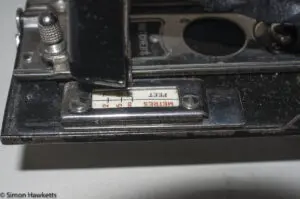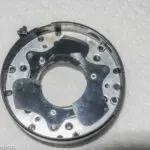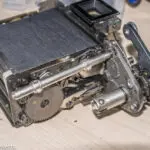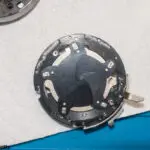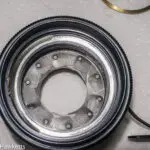This post looks at a medium format folding camera which was made sometime around the time of the first world war - the Butcher's Watch Pocket Carbine.
My Butcher's Watch Pocket Carbine camera
I bought this camera from eBay and was mostly driven to make the purchase by the name, which intrigued me. I could understand why the camera had the Watch Pocket part of the name - presumably it is small enough to fit in a watch pocket (although it would need to be a big watch). The part of the name I didn't understand was 'Carbine' but a bit of research led me to this page which offers an explanation. Apparently, the name Carbine was a generic description of a range of folding cameras by Houghton and Butcher. Houghton and Butcher eventually became the Ensign company, which was a large supplier of cameras until the early 1960s.

The camera I received is in pretty good condition considering its age. There are some parts of the covering which are scratched and peeling, especially around the film winding knob, but the unit has been around for 80 or 90 years, so that's not really surprising. The shutter works although all the speeds sound like the same to me, and the aperture adjusts smoothly.
Crucially, the bellows are intact and lightproof. Although it's possible to repair or even replace bellows, it's a tricky job and one I've not attempted, although I would like to try making a set one day.
The only actual fault I found with the camera was that the smallest red window in the back was missing its red glass, but fortunately I found that in the camera body, so it just needs sticking back into place.
Pictures of the Butcher's Watch Pocket Carbine
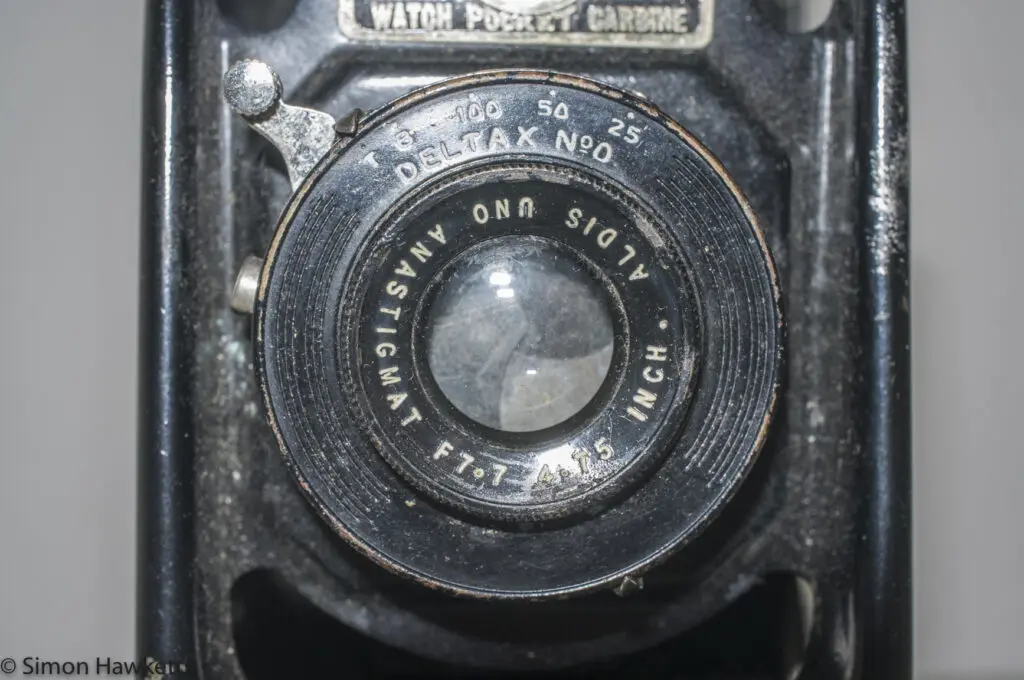
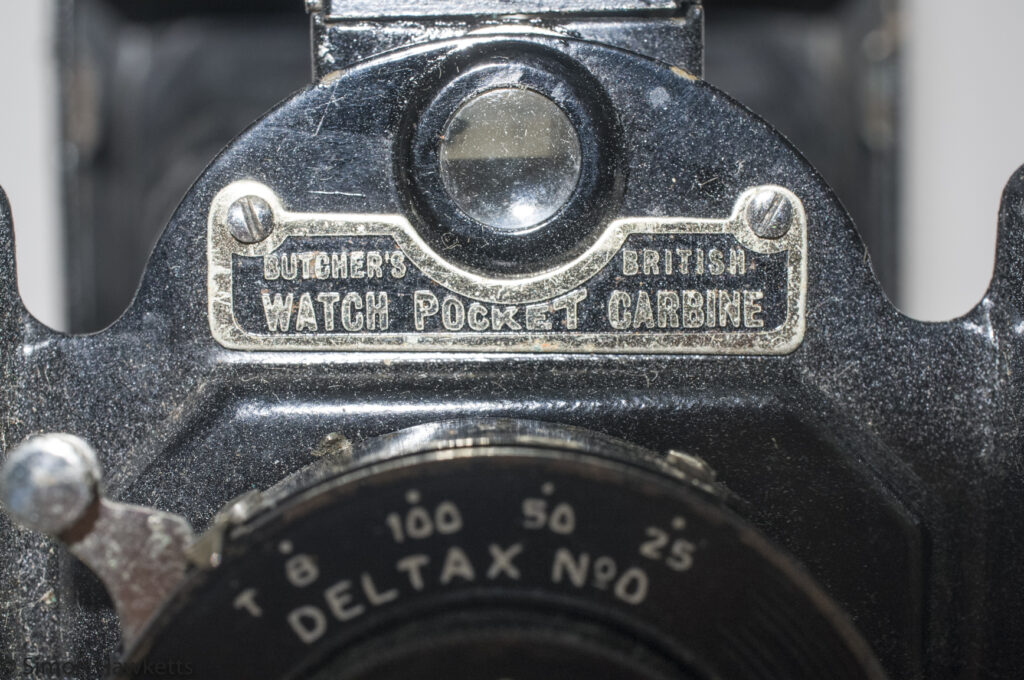

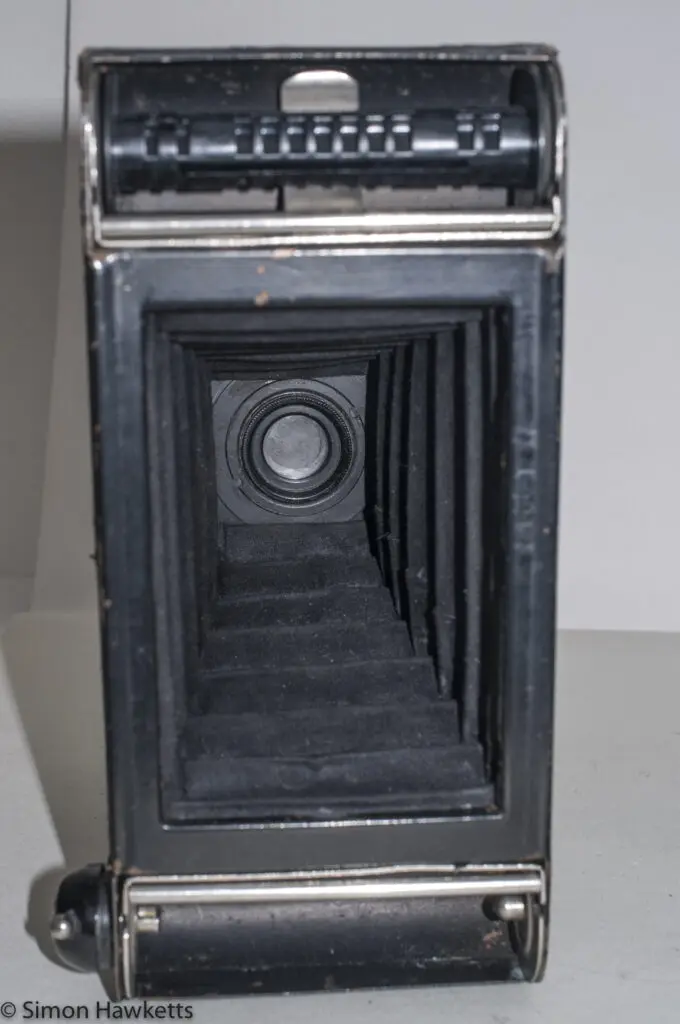


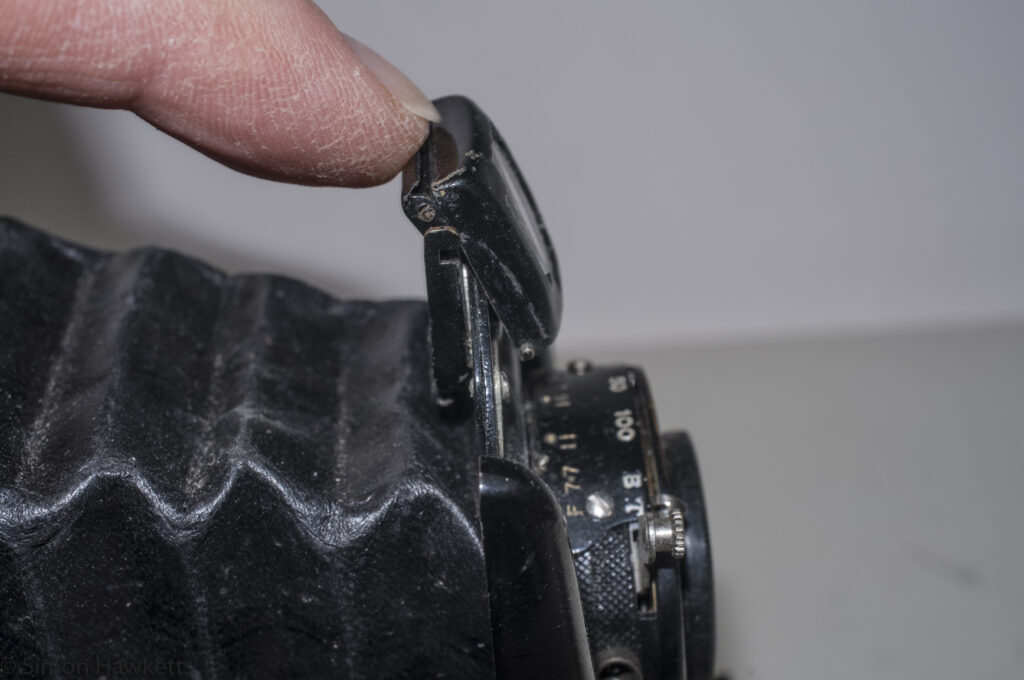
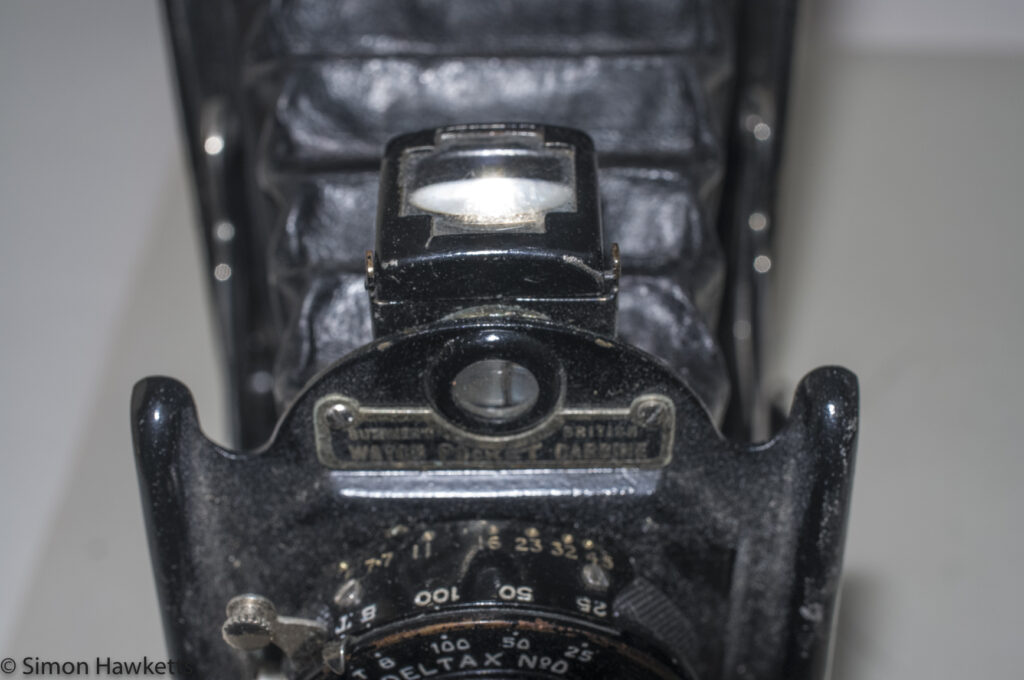
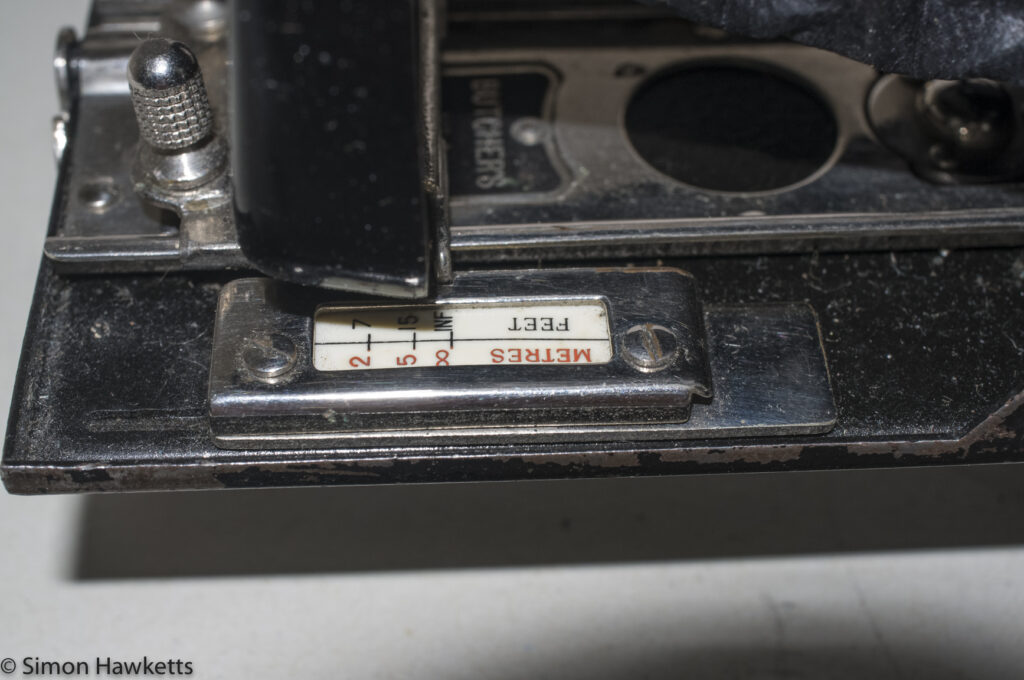

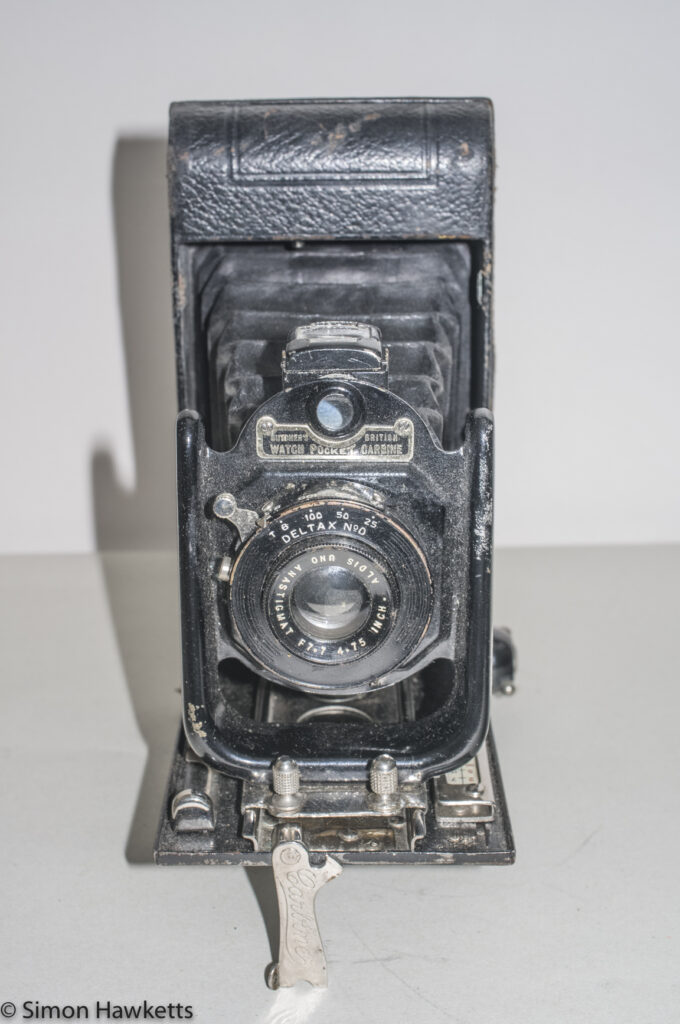

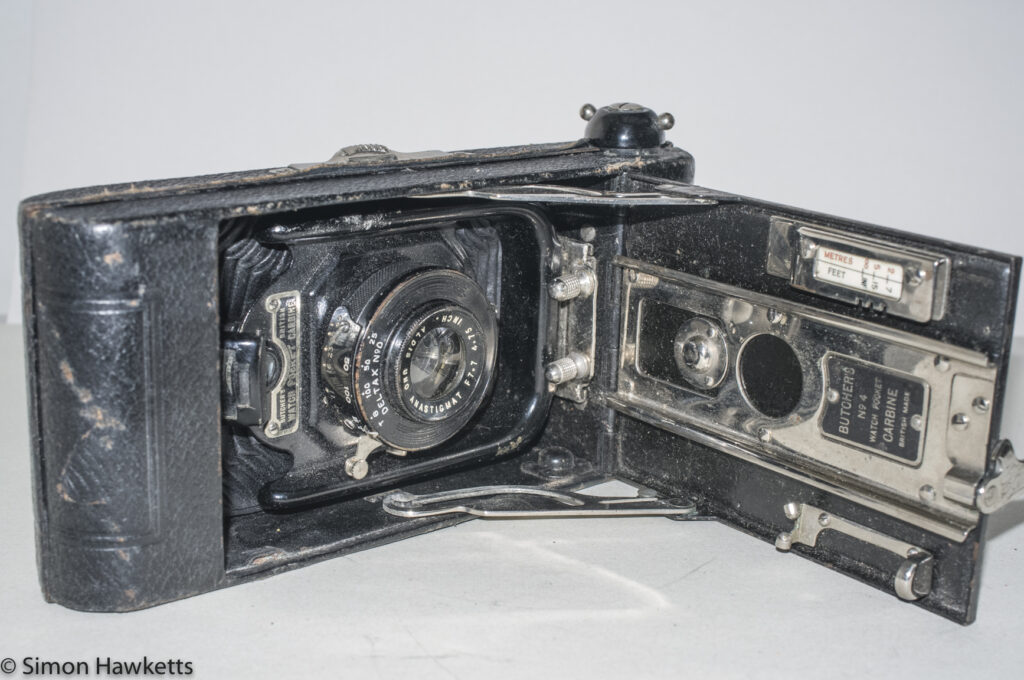

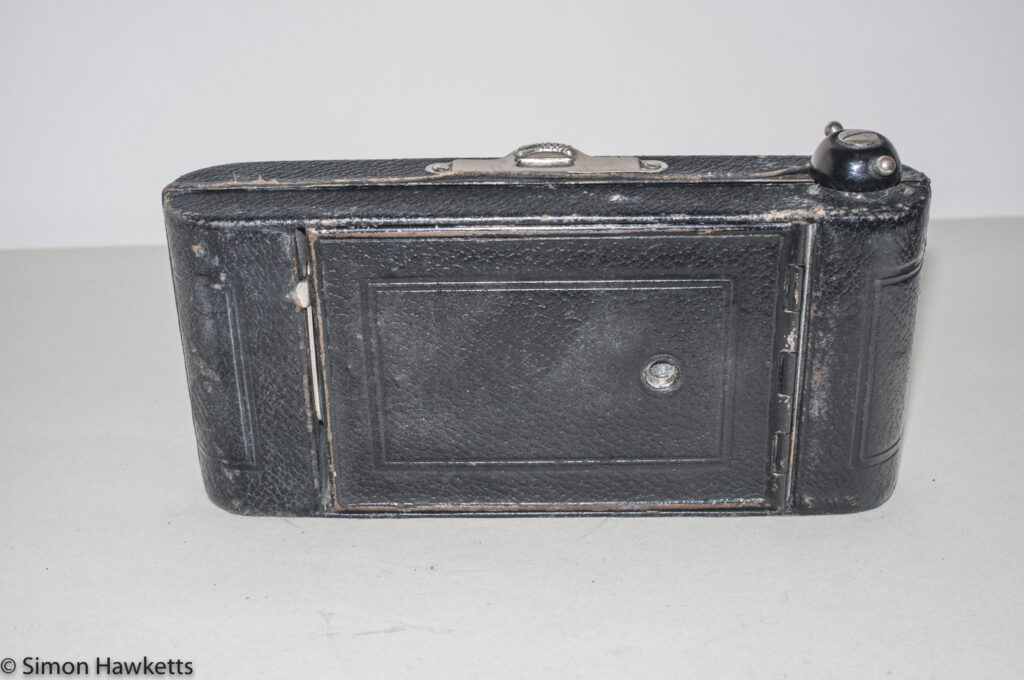
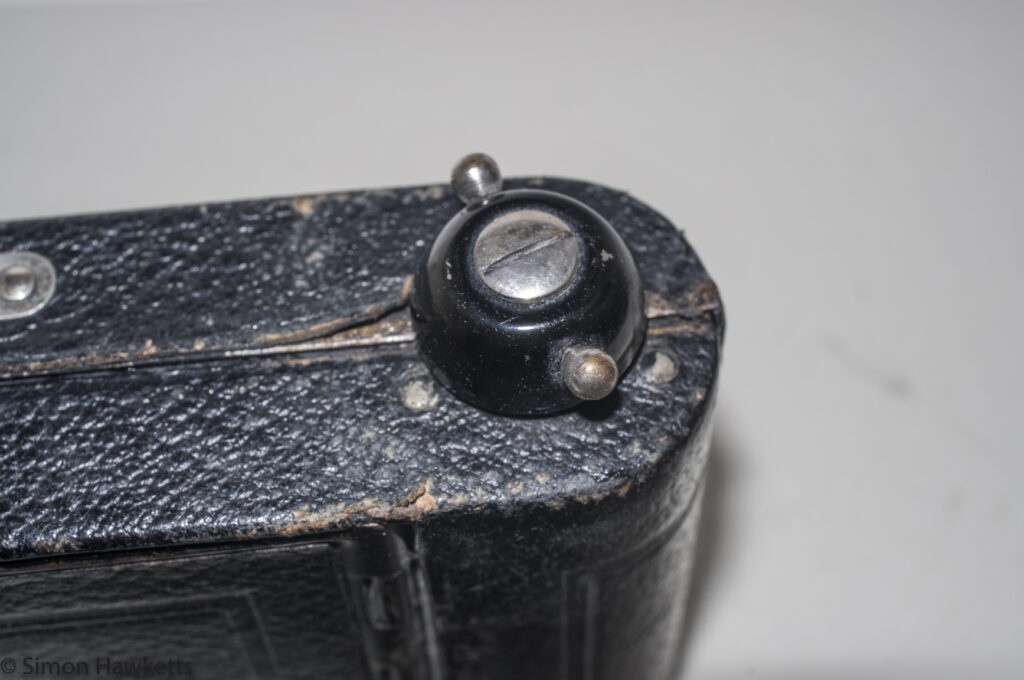
Butcher's Watch Pocket Carbine Description
This is a folding camera with a 5 speed shutter and a 4.75 inch f/7.7 lens. Since lens focal lengths are normally specified in mm I had to do a quick calculation to find that this lens is about 120 mm.
In common with all folding cameras, there is a front panel which sits in front of the lens assembly, which can be unclipped and pulled down perpendicular to the camera body where it clips into place. Unlike many folders, the lens doesn't 'pop' out at this point, but needs to be pulled out of the camera body by engaging the front standard of the camera on a chrome rail which runs along the length of the front panel.
When the front standard is pulled out, it clicks into place against a metal plate at the front of the camera which acts as the focus adjustment. The first click stop is for the infinity setting, and then there are two more settings, one for 15 feet and another for 7 feet. To set the camera to these settings, or to push the front standard back into the camera body, the edge of the focus setting needs to be pushed down to disengage the clip, so the lens unit can move.
With the focus set, the only other settings the photographer needs to make are for the aperture and shutter speed, and these two settings are controlled by levers on the front of the lens.
The shutter speed has a small lever on the top of the shutter which is marked in the 5 settings available, while the aperture adjustment is on the bottom, although the aperture reading is on a scale on the top of the lens. The widest aperture available is f/7.7 which by today's standards is quite slow and even at the time would mean the camera would really only be used outside on sunny days. I wonder when the smallest aperture of f/45 would ever be used? Probably only with a time exposure.
The camera accepts standard 120 film and can take a total of 8 pictures with a negative size of 6 cm x 9 cm. This is quite a big negative, but remember when this camera was made it was normal to have contact prints made rather than enlargements, so the actual picture was also 6 x 9 cm or 2 1/4 * 3 1/4 inch.
Butcher's Watch Pocket Carbine No 4 Specs
- Medium format folding camera.
- Aldis Uno 4.75 inch (120 mm) lens
- Aperture f/7.7 to f/45
- Shutter speeds 1/25, 1/50, 1/100 + bulb & time
- Focus adjustment by moving front standard
- Cable release socket
- Vertical and Horizontal viewfinder
- Tripod thread for vertical and horizontal orientation
- Snap-fit back cover
- Front panel catch acts as a foot for balance
- 8 6x9 cm pictures on one roll of 120 film
- Manual available on-line here.
